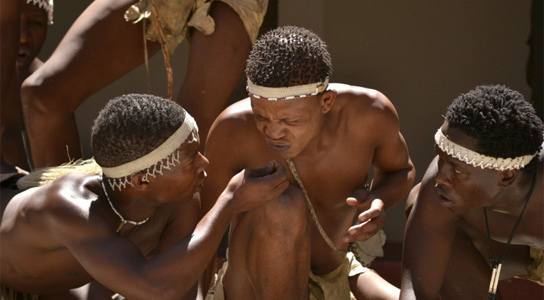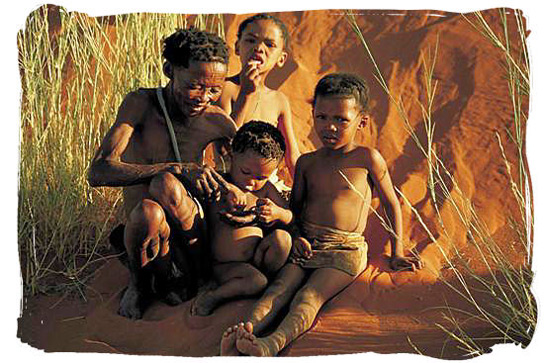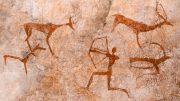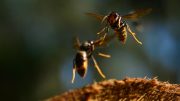
Sub-Saharan African hunter-gatherer and pastoralist tribes, close linguistically, belong to two distinct genetic clusters.
Hunter-gatherer and pastoralist tribes in sub-Saharan Africa, where humans are thought to have originated, even though linguistically close, belong to two different distinct genetic clusters.
Two new studies exploring their genetics were published in Science and Nature Communications (preprint available through arXiv). Both teams looked at single nucleotide polymorphisms (SNPs) in the DNA of the various populations. The teams deduced that the southern Africa click-speaking populations actually belong to two genetically differentiated groups, one in the north and one in the south of the Kalahari. They went their separate ways 30,000 years ago and it’s somewhat puzzling how this could have happened.

They could have become isolated because of cultural reasons, or if there was some kind of geographical isolation that led to this differentiation. Africa was very dry during the last glacial maximum, and this could have led to an extended period of smaller population sizes, more population subdivision and increased fragmentation.
The Sandawe and the Hadza, east-African hunter-gatherers who speak a click language, but are geographically isolated from other Khoisan people, derive a quarter of their ancestry from the southern African click-speakers. There must have been a common link between these various people.
This connection is important because anthropologists have found fossil evidence that suggests that modern humans originated in east Africa, whereas genetic studies indicate a southern origin. The identification of this genetic link could help resolve this problem.
Some of the genes that were being studied seem to have undergone changes due to natural selection since the split. The genes involved are in muscle function, growth and immunity. This could imply that some of them had extensive contact with European colonists and suffered epidemics like smallpox.
References:
“Genomic Variation in Seven Khoe-San Groups Reveals Adaptation and Complex African History” by Carina M. Schlebusch, Pontus Skoglund, Per Sjödin, Lucie M. Gattepaille, Dena Hernandez, Flora Jay, Sen Li, Michael De Jongh, Andrew Singleton, Michael G. B. Blum, Himla Soodyall and Mattias Jakobsson, 20 September 2012, Science.
DOI: 10.1126/science.1227721
“The genetic prehistory of southern Africa” by Joseph K. Pickrell, Nick Patterson, Chiara Barbieri, Falko Berthold, Linda Gerlach, Tom Güldemann, Blesswell Kure, Sununguko Wata Mpoloka, Hirosi Nakagawa, Christfried Naumann, Mark Lipson, Po-Ru Loh, Joseph Lachance, Joanna Mountain, Carlos D. Bustamante, Bonnie Berger, Sarah A. Tishkoff, Brenna M. Henn, Mark Stoneking, David Reich and Brigitte Pakendorf, 16 October 2012, Nature Communications.
DOI: 10.1038/ncomms2140









Be the first to comment on "Geographically Close Neighbors Have Been Genetically Isolated for Thousands of Years"